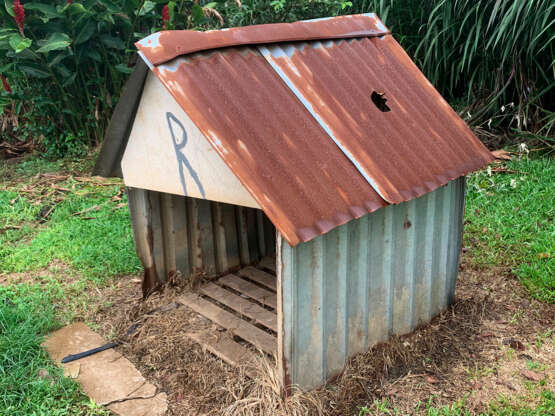ID 716389
Lot 4 | THE AGUAS ZARCAS DOGHOUSE
Valeur estimée
$ 200 000 – 300 000
Meteorites are fragments of natural material from interplanetary space that impact Earth. For purposes of identification, meteorites needed a nomenclature system and so they have been named after the closest city, county, geological feature or desert region to which they were “delivered”. The overwhelming majority of meteorites originate from the asteroid belt between Jupiter and Mars. Some meteorites are from Mars itself, others from the Moon, where tremendously energetic asteroid impacts on their respective surfaces ejected material into space — some of which entered Earth-crossing orbits. (See lot 65, the third largest Mars rock on Earth.)
Most cosmic debris coming our way disintegrates in the atmosphere. Of the material that strikes Earth, most falls into the oceans which cover 2/3 of the planet’s surface. Of those samples that touch down on land, most are never found; they’ve either fallen into a place that’s uninhabited or are enveloped by groundcover. Meteorites are extremely rare: the combined mass of all known meteorites is less than the world’s annual output of gold.
METEORITE IMPACTS
While hundreds of massive fireballs are seen every year, only about eight new witnessed falls are found each year. Rarely do they strike anything of concern. There has never been a documented human death by a meteorite impact, and the only documented animal death occurred in 1972: a cow in Venezuela (see lot 5).
Although the few homes hit by falling meteorites do not become worth more when struck, that is not the case with other objects. A meteorite that battered a mailbox, tearing it off its post, in Claxton, Georgia was sold at auction in 2007 for $83,000. The most famous object impacted by a meteorite occurred almost immediately after a young woman bought her grandmother’s old Chevy Malibu for about $400. After being struck by the Peekskill meteorite one week later, she sold the car for $69,000. It subsequently changed hands for $230,000 in 2010.
THE AGUAS ZARCAS DOGHOUSE
In the rain forest of north central Costa Rica is the city of Aguas Zarcas (pop. 20,200). On April 23, 2019 at 9:07 p.m., a German Shephard named Roky experienced quite a fright. A meteorite, part of a shower of exotic stone meteorites loaded with organic compounds (see lots 26 and 31), crashed through his doghouse, barely missing him. The formal coordinates of Roky’s home, 10°24’9.35"N 84°21’51.26"W, are now forever part of the scientific literature.
Aguas Zarcas meteorites are the same type as Murchison, among the most researched meteorites of all time (see lot 26). These samples not only contain tens of thousands of prebiotics, including amino acids, but also pre-solar grains ranging up to twice the age of the solar system. Today, many cosmochemists throughout the world are either investigating Aguas Zarcas specimens or waiting to obtain them.
The doghouse is made of pressed wood with an oxidized tin roof. The words “House” and “Roky” are sketched in pencil on the fascia; the only painted graphic is a large condensed “R”. A seven-inch hole marks where the meteorite punctured the roof. A badly weathered pressed-wood floor was demolished by the meteorite impact and the rotted wood support columns have been replaced. Now offered is the object that in April 2019 joined the ranks of the most sought-after curiosities: the doghouse struck by a meteorite.
Christie's would like to thank Dr. Alan E. Rubin at the Department of Earth, Planetary, and Space Sciences, University of California, Los Angeles for his assistance in preparing this catalogue.
Doghouse dimensions: 146 x 134 x 131cm (4.75 x 4.5 x 4.33 ft.)
Platform dimensions: 10 x 183 x 216cm (0.33 x 6 x 7 ft.)
| Adresse de l'enchère |
CHRISTIE'S 8 King Street, St. James's SW1Y 6QT London Royaume-Uni | |
|---|---|---|
| Aperçu |
| |
| Téléphone | +44 (0)20 7839 9060 | |
| Commission | see on Website | |
| Conditions d'utilisation | Conditions d'utilisation |






